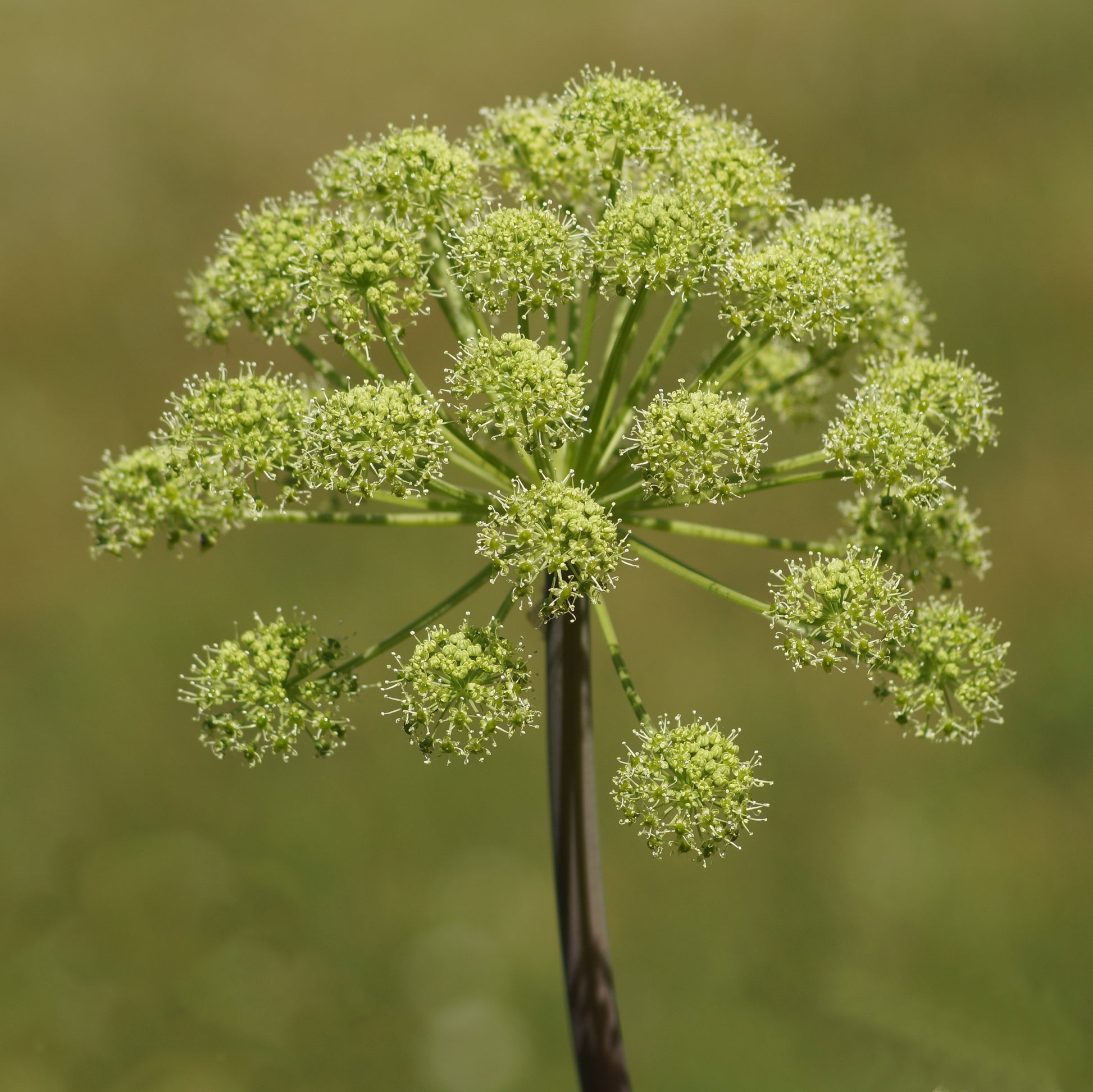TIMELESS Essential Oils
Angelica Root
Couldn't load pickup availability
Pure Angelica Root
Product Details
Botanical name
Angelica archangelica or Angelica officinalis
Extraction method / Source
Steam Distilled / Young roots
Aroma
Herbaceous, sweet, woody, musky, spicy
Note
Top, middle and base
Odor Intensity
9
Key constituents
Alpha-pinene, beta-phellandrene, limonene, theta-3-carene
Plant description
Botanical family: Umbelliferae or Apiaceae
Native to Syria, Angelica archangelica is a highly aromatic biennial herb which grows to 6 feet in height. It produces bright green leaves, umbels of yellow-green flowers and thick, fleshy roots. It is now cultivated in a number of temperate areas.
Regions of Production
India
Growing Practices
Cultivated without the use of chemical fertilizers or pesticides
Properties
Antibacterial, anti-fungal, anti-inflammatory, antiseptic, antispasmodic, carminative, cholagogue, depurative, diaphoretic, digestive, diuretic, emmenagogue, expectorant, nervine, stomachic, tonic. (Battaglia, 2003, Shutes, 2014)
(Please refer to the Glossary for terms which may be new to you.)
Uses / Benefits
Added to massage oil, it promotes lymph drainage, relieves fluid retention and arthritis symptoms, reduces cellulite. It is a nerve tonic and is recommended for weakness, fatigue, nervousness and stress related disorders. As an expectorant, it is useful in the management of chronic respiratory conditions, coughs and sinus infections. Angelica root essential oil is used in natural perfumes, and to fragrance soaps, skin creams and lotions. (Battaglia, 2003)
Fragrant influences
Promotes strength in the spirit and mind. Recommended for those who are afraid, indecisive or who lack perseverence. (Battaglia, 2003)
Modes of Administration
Topical: Massage
Inhalation: Direct Inhalation, Diffuser, Oil Vaporizer, Aromatherapy Inhaler
Safety
Non-toxic and non-irritating. It is phototoxic, sensitizing the skin to UV light.
TIMELESS Essential Oils guarantees the purity and quality of all our therapeutic oils. The current Certificate of Analysis is available upon request. All essential oils are best stored in an airtight container away from heat and light.
Notice
This information is for educational purposes only. It has not been evaluated by the US Food and Drug Administration. It is not intended to diagnose, treat, cure or prevent any condition or disease, and should not take the place of evaluation by a qualified health professional. Although we strive to provide information which is accurate and up to date, we cannot guarantee the accuracy or completeness of this information.
Precautions
Pure essential oils are highly concentrated plant extracts. Do not use them undiluted, or in the eyes or mucus membranes. If applying an essential oil to the skin, always dilute it with a proper carrier oil and test on a small patch of skin before applying to a large area. Do not take them internally except under the direction of a qualified professional trained in Aromatherapy. Always familiarize yourself with the safety, contraindications and proper preparation of each essential oil before use. Note that when using essential oils for children and the elderly, very low concentrations should be used. Keep all essential oils away from children and pets.
References
Althea Press, Essential Oils : Natural Remedies, 2015.
Althea Press, Berkeley, CA.
Battaglia, Salvatore, The Complete Guide to Aromatherapy, Second Edition, 2003.
The International Centre of Holistic Aromatherapy, Brisbane, Australia.
Green, Mindy, Natural Perfumes, 1999. Interweave Press, Loveland, CO.
International Fragrance Research Association, http://www.ifraorg.org/en-us/standards (January 5, 2016).
Schnaubelt, Kurt, The Healing Intelligence of Essential Oils : The Science of Aromatherapy, 2011. Healing Arts Press, Rochester, VT.
Shutes, Jade, The Dynamics of Blending: A Guide to Blending and a Reference Manual for Essential Oils and Base Materials, 2014.
The East-West School for Herbal and Aromatic Studies, Chapel Hill, NC.
Tisserand, Robert and Young, Rodney, Essential Oil Safety, 2nd edition, 2014. Churchill Livingstone Elsevier, New York, NY.
Tourles, Stephanie L, Hands On Healing Remedies, 2012. Storey Publishing, North Adams, MA.
United States Food and Drug Administration, HHS, 182.1 Substances That Are Generally Recognized as Safe, 182.20 Essential oils, Oleoresins (solvent-free), and natural extractives (including distillates), http://www.gpo.gov/fdsys/CFR-2012-title21-vol3-sec182 (January 28, 2016).


